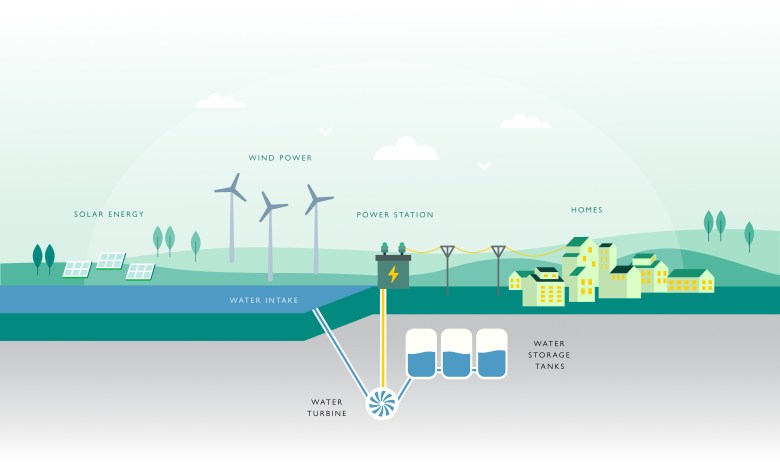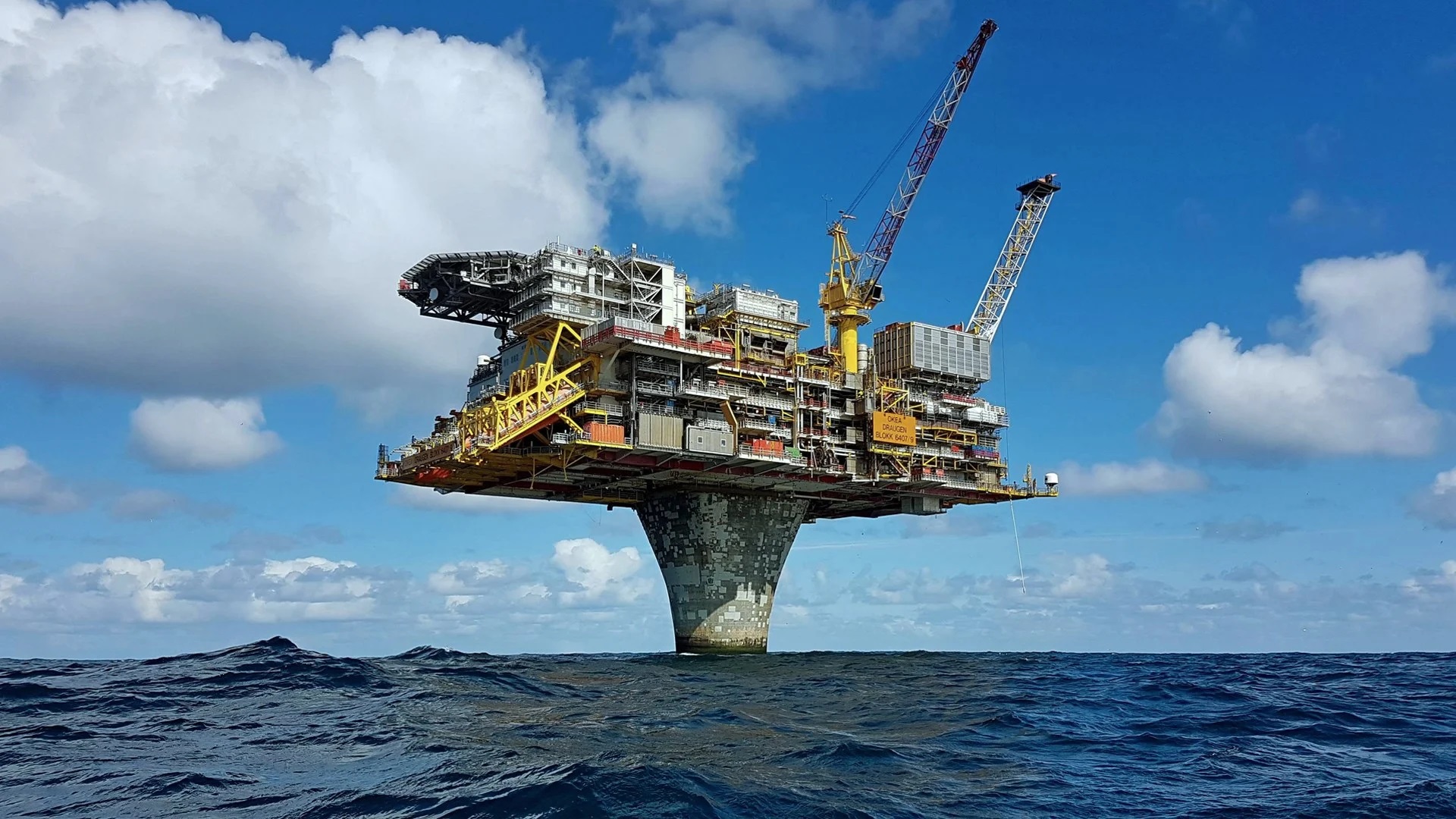The hits just keep on coming for fossil energy stakeholders. The latest field to face down reality is the oil shale business, which depends on favorable energy policies in Estonia and elsewhere for support. Now it’s about to get the boot. Instead, Estonia is turning the spotlight on its considerable offshore wind resources and a massive new long-duration, pumped hydropower energy storage project, most of which will be hidden underground.
Authoritarian Governments & Oil Shale, Begone
The firm behind the energy storage project is the Estonian startup Zero Terrain, and they are not shy about the touting the supply chain advantages of hydropower over other systems.
“It is a complete energy system overhaul with minimal disruption to everyday life,” Zero Terrain explains. “We provide 100% renewable, affordable, secure energy and income for generations without compromising the environment or politics.”
“As a result of the low use of critical materials, both the supply risk and the impact of material inflation are lower. This reduces the dependence of advanced economies on authoritarian regimes,” they add.
That’s a pretty bold statement for a firm doing business in the shadow of Russia, where President Vladimir Putin is well into his third year of attempting to bomb Ukraine into submission.
The company also takes note of the role of Estonia’s offshore wind resources in releasing it from the grip of oil shale (not to be confused with shale oil) for power generation. In that regard, they have plenty of company.
“As a strategic infrastructure project, the project has received support from the Connecting Europe Facility, managed by the European Climate, Infrastructure and Environment Executive Agency (CINEA). Energiasalv is jointly owned by AS Alexela, a leading Estonian energy company; Sunly AS, a Baltic-Polish renewable energy company; Combiwood Grupp OÜ, Warmeston OÜ, Ronnivara OÜ, and Vool OÜ, owned by the company’s CEO,” Zero Terrain recounts.
How To Do Pumped Hydropower Energy Storage On Flat Ground
As for Zero Terrain’s interest in pumped hydropower for energy storage, that’s easy. The latest new improvement in lithium-ion battery technology typically gets loads of media attention, but plain old water plays a much more significant role in the utility-scale energy storage field.
In the US, for example, more than 90% of utility-scale energy storage capacity still consists of pumped storage hydropower facilities. This tried-and-true technology involves pumping water to an uphill reservoir when excess power is available. When electricity demand rises, the water is allowed to run downhill to a generating station below.
Some pumped hydropower systems discharge the spent water into a river. Others recirculate water in a loop. Both have one key characteristic in common, that being the availability of a lower and a higher elevation.
Building a pumped hydro system on flat ground would involve a massive investment in new infrastructure to raise the elevation of an upper reservoir — except maybe it does not. Last year, for example, the Texas startup Quidnet Energy received a $10 million grant from the US Department of Energy to fine-tune a geomechanical energy storage system that deploys underground rock formations as the lower reservoir, enabling the upper reservoir to be constructed at ground level.
“GPS [geomechanical pumped storage] uses the earth as a mechanical battery by storing energy as pressurized water between layers of rock,” the Energy Department explained. “The objective is to lower cost associated with long-duration energy storage by 50-75% to enable more reliable and cost-effective utilization of renewable electricity generating assets.”
How To Make Flat-Ground Pumped Energy Storage Make Sense, Financially
The Quidnet solution saves on costs partly by deploying existing underground formations instead of building all-new infrastructure. Zero Terrain has also caught on to the idea. The company is proposing an economical pathway towards a new 500-megawatt underground pumped hydroenergy storage solution for Estonia. The facility will be located in coastal town of Paldiski, which sits where the Baltic Sea meets the Gulf of Finland.
Instead of searching for existing rock formations, Zero Terrain is pre-planning an underground pumped hydro system in tandem with a new mining operation.
If all goes according to plan, material from the mine at Zero Terrain Paldiski will be sold to help offset the cost of building and operating the pumped hydro system.
“By placing the lower reservoirs in a suitable location on the Earth’s crust, additional income from sales of excavated rock is obtained,” Zero Terrain explains.
“In case of the Estonian Pumped-Hydro Energy Storage project, the business plan involves production and sales of 15 million tonnes of chrystalline aggregates, which is to replace an imported high-cost igneous aggregates and low-quality domestic limestone aggregates, where appropriate,” they add.
Chip in a few dollars a month to help support independent cleantech coverage that helps to accelerate the cleantech revolution!
What About The Wind Power?
Zero Terrain received the initial permits for the Paldiski project in 2022. Earlier this week, the firm announced that it has signed a Memorandum of Understanding to partner with the Estonian Ministry of Climate on the project. The company also received a grant of €1.98M from Estonia’s applied research program.
The timeline calls for construction to begin in 2025. The expectation is that the new energy storage facility will hit the long duration goal of 12 hours, far more than an array of lithium-ion batteries could accommodate.
“During the nominal operating cycle of 12 hours, Zero Terrain Paldiski generates 6GWh of power to the grid, which is somewhat more than the average daily consumption of all Estonian households,” Zero Terrain explains.
The big question is where will all the renewable energy come from, and that’s where the Baltic Sea comes in. CleanTechnica has been keeping an eye on offshore wind activity among the Baltic nations, and let’s just say it’s crazy.
To take just one example, in November CleanTechnica noted that the leading wind developers Copenhagen Infrastructure Partners and the Ignitus Renewables branch of the European firm Ignitus Group are planning a 1-1.5 gigawatt wind farm in Estonian waters, consisting of two previously separate projects.
Meanwhile, the Swedish offshore wind developer OX2 is also planning a series of Baltic Sea offshore wind projects, including Noatun South and Noatun North in the Åland area. The Nautan wind farms will distribute electricity to Estonia as well as Sweden and Finland.
Hold onto your hats. Estonia’s solar industry is also coming on strong, along with other onshore renewables. It looks like Zero Terrain will have more than enough renewable resources in hand to keep the Paldiski underground energy storage facility humming. That’s just for starters.
“The project is a pilot demonstration of the advanced Zero Terrain technology and showcases its potential before expanding globally,” the company stated in a press release earlier this year.
Source: https://cleantechnica.com/


